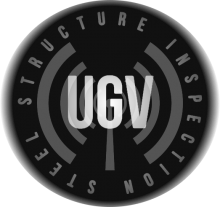RF-Controlled Unmanned Ground Vehicle
Background
The RF-controlled Unmanned Ground Vehicle (UGV) is usually designed to perform jobs and operate on land or surface without a human operator onboard. RF-controlled stands for radio frequency controlled, meaning that operation happens from a safe distance using a wireless controller. The RF-controlled UGV is designed depending on the task/job that needs to be performed and this job can range from civilian to military use. As a result, a RF-controlled UGV would be perfect for the inspection of steel structures.
The purpose of creating a UGV that will inspect structural defects is to provide safety to workers by being able to inspect structural defects without the risk of the workers gaining an injury, or even possible death. The structural defects can include corrosion, cracks, holes, and buckling. This RF-controlled UGV can also be multipurpose, meaning it doesn't need to just inspect defects, but also be able to replace missing screws, rivets, and bolts. With a UGV created to move on surfaces (especially on angled surfaces) and move from one plane to another, it can create an easier and more efficient way to inspect steel structures.
The UGV inspections can be performed under real world time and possible constraints where sometimes a human being is unable to perform the task. In addition, the UGV reduce injuries and fatalities that occur during construction, which is at an all time high when compared to previous years (from 2011 to 2019, it has risen by 90%). Not only can a UGV reduce the injurie and fatalities, it can also be more cost efficient, reduce manpower needed, reach spaces humans cannot, and perform tasks more efficiently when compared to a human.
Goals and Objectives
The objective of this project is to design an radio frequency controlled unmanned ground vehicle (UGV) that is capable of climbing up steel structures and executing a steel structure inspection.
- Design chassis
- Design wheel’s mobility and climbing capability
- Electrical wiring to control key components
- Radiofrequency controller and programming
The Team Name
Steel Spider
The process of selecting our team name began after our first team meeting with the sponsor. Our first idea was to come up with a name using our initials, but we felt like it would sound like gibberish, especially if each initial just meant the first letter of our names and nothing more. We wanted to choose something that had meaning and spoke to what our project was about. We thought an animal name could be an interesting idea. We started listing animals that can climb, as our design had to be able to climb very tall structures. We thought of names like “Wombat”, “Spider Monkey”, “Sloth” and “Jaguar”. However, we realized that our robot would not technically be “climbing” the tree but it would be sticking to the surface and moving around. When someone pointed that out, we all thought of the iconic Marvel character Spider-Man. We decided to use that as inspiration and chose “Spider” as our team name. Nevertheless, because our project would only stick to steel structures, we decided to call the team “Steel Spider” instead. In addition, we liked that Spider-Man also has a suit called the “Iron Spider,” so replacing the word iron with steel was a perfect fit.
Team Contact
Jeffrey Song - jeffrys1@uci.edu
Anthony Laredo - alaredo@uci.edu
Abraham Mercado - amercad4@uci.edu
Diego Josue Espino - espinodj@uci.edu
Sponsor/Advisor
Ralph Sabbagh - rsabbag1@uci.edu

